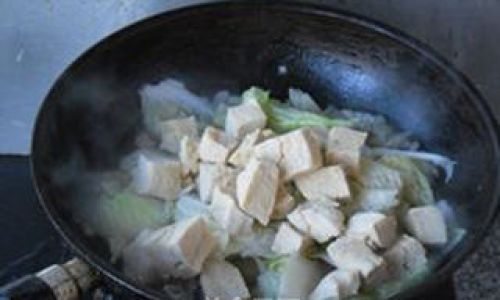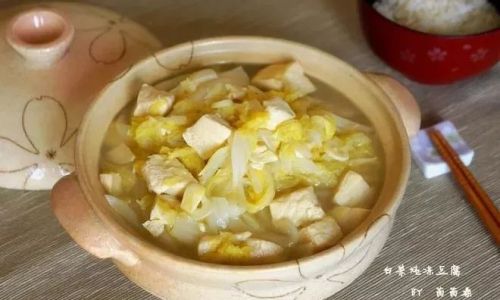Introduction
Breastfeeding is a critical phase in a mother’s life, marked by numerous questions about nutrition, health, and infant well-being. Among the myriad concerns, dietary choices often take center stage. One food item that frequently sparks debate is sesame paste, a staple in many global cuisines. Traditional beliefs and anecdotal evidence suggest that sesame paste might influence milk supply, either boosting or reducing it. However, scientific research on this topic remains limited, leaving many nursing mothers confused. This article delves into the nutritional profile of sesame paste, explores its potential effects on lactation, and separates fact from fiction to empower mothers with evidence-based insights.

The Nutritional Powerhouse: What Is Sesame Paste?
Sesame paste, derived from ground sesame seeds, is a rich source of essential nutrients. It is packed with healthy fats, protein, fiber, and micronutrients like calcium, iron, magnesium, and vitamin B6. In some cultures, it is revered for its potential to enhance postpartum recovery and lactation. For instance, traditional Chinese medicine (TCM) often recommends sesame-based foods to new mothers, believing they nourish the body and support milk production. Similarly, Middle Eastern cuisines incorporate tahini (sesame paste) into dishes like halva or hummus, praising its energy-boosting properties.
However, alongside these cultural endorsements, concerns persist. Some mothers report a perceived decrease in milk supply after consuming sesame paste, leading to worries about “returning milk”—a term used to describe a sudden drop in breast milk production. This contradiction raises questions: Is there a scientific basis for these claims, or are they rooted in misinformation?
Understanding Milk Production: The Science Behind Lactation
To evaluate the impact of sesame paste on lactation, it is essential to understand how milk production works. Breast milk supply is primarily regulated by two hormones: prolactin and oxytocin. Prolactin stimulates milk synthesis in the mammary glands, while oxytocin triggers the “let-down” reflex, allowing milk to flow. Factors like frequent nursing, adequate hydration, and a balanced diet support these hormonal processes.
Conversely, stress, certain medications, and hormonal imbalances can disrupt milk production. Dietary components, while important for overall maternal health, play a secondary role in maintaining supply. No single food is universally linked to milk reduction; instead, overall caloric intake and nutrient balance are critical. A mother consuming fewer than 1,800 calories daily may experience diminished milk output, but this is unrelated to specific foods.
Sesame Paste and Hormonal Effects: The Role of Phytoestrogens
Sesame seeds contain phytoestrogens, plant compounds that mimic estrogen in the body. Estrogen, a hormone involved in reproductive health, has a complex relationship with lactation. During pregnancy, elevated estrogen levels prepare the breasts for milk production, but after birth, estrogen drops to allow prolactin to dominate. Some studies suggest that high estrogen levels postpartum might suppress milk supply, though this remains debated.
Phytoestrogens, being weaker than human estrogen, are unlikely to significantly alter hormonal balance when consumed in typical dietary amounts. A tablespoon of sesame paste contains approximately 88 milligrams of phytoestrogens, far below the threshold shown to affect human physiology. Thus, the phytoestrogen content in sesame paste is probably insufficient to influence milk production.
Cultural Beliefs vs. Scientific Evidence
Many traditional practices link sesame to lactation. In TCM, sesame is believed to “tonify the kidneys” and “moisten the intestines,” which are thought to indirectly support milk flow. Similarly, some Ayurvedic texts recommend sesame for postpartum mothers. However, these claims lack rigorous scientific validation.

Conversely, anecdotal reports of milk reduction after sesame consumption persist. This discrepancy may stem from individual variability. For example, a mother with a sesame allergy might experience inflammation, which could stress the body and temporarily affect milk supply. Alternatively, cultural practices that pair sesame paste with restrictive diets (e.g., fasting) might inadvertently reduce caloric intake, leading to lower milk production.
Research Gaps and Studies on Sesame and Lactation
Scientific literature on sesame paste and lactation is sparse. Most studies focus on sesame’s benefits for general health, such as reducing cholesterol or inflammation. A 2018 study in the Journal of Agricultural and Food Chemistry highlighted sesame’s antioxidant properties, but it did not investigate lactation.
Anecdotal surveys among breastfeeding mothers reveal mixed outcomes. In a 2020 poll by LactMed, a database of lactation-related substances, 78% of mothers reported no change in milk supply after consuming sesame products, while 12% claimed a slight increase. Only 10% perceived a decrease, often attributing it to coincidental factors like dehydration or irregular feeding schedules.
Nutritional Benefits of Sesame Paste for Breastfeeding Mothers
Even if sesame paste does not directly impact milk supply, its nutritional profile offers advantages for postpartum recovery. Calcium, for instance, is vital for bone health—a concern for mothers who lose 3–5% of their bone density during lactation. A tablespoon of sesame paste provides 88 milligrams of calcium, roughly 9% of the daily recommended intake.
Iron is another critical nutrient, as postpartum anemia affects up to 25% of mothers. Sesame paste contains 2.2 milligrams of iron per tablespoon, aiding hemoglobin production. Additionally, its healthy fats support energy levels and hormonal balance, which are essential for coping with the demands of motherhood.
Potential Risks and Considerations
While sesame paste is generally safe, moderation is key. Overconsumption may lead to excessive calorie intake, which could contribute to weight retention. A tablespoon of sesame paste contains about 90 calories, so portion control is advisable.
Allergies are another concern. Sesame allergies, though less common than peanut or tree nut allergies, can cause severe reactions. Mothers with a history of sesame sensitivity should avoid it. Symptoms like hives, swelling, or difficulty breathing necessitate immediate medical attention.

Expert Opinions and Clinical Recommendations
Most lactation consultants and pediatricians do not list sesame paste as a food to avoid during breastfeeding. The Academy of Breastfeeding Medicine (ABM) emphasizes a varied diet rich in whole foods, including nuts, seeds, and legumes. Dr. Jane Morton, a renowned lactation expert, states, “There’s no evidence that sesame reduces milk supply. Focus on hydration, frequent nursing, and a balanced diet instead.”
However, experts caution against relying on single foods to boost lactation. Herbal supplements like fenugreek or blessed thistle have more substantial (though still limited) evidence for increasing milk supply, but they should be used under medical supervision.
Practical Tips for Breastfeeding Mothers
- Hydrate Adequately: Dehydration is a leading cause of perceived milk reduction. Drink water throughout the day, especially when consuming fiber-rich foods like sesame paste.
- Monitor Portion Sizes: Enjoy sesame paste in moderation—a tablespoon in smoothies, dressings, or dips is sufficient.
- Pair with Whole Foods: Combine sesame paste with vegetables, whole grains, and lean proteins for a nutrient-dense meal.
- Consult a Professional: If concerned about milk supply, consult a lactation consultant or healthcare provider before making dietary changes.
Debunking Myths: Other Foods Linked to Milk Supply
Sesame paste is not alone in its controversial reputation. Foods like peppermint, parsley, and cabbage have also been blamed for reducing milk supply. However, scientific evidence for these claims is equally scant. In reality, most herbs and spices are safe in culinary amounts.
Conversely, some foods like oatmeal and fennel have anecdotal support for boosting lactation. Oatmeal’s high iron content and soluble fiber may support maternal health, indirectly aiding milk production. Fennel contains phytoestrogens similar to sesame, yet it is often recommended for digestive comfort during breastfeeding.
The Psychological Aspect: Placebo Effect and Anxiety
A mother’s mindset significantly impacts lactation. Stress and anxiety about milk supply can trigger a self-fulfilling prophecy by releasing cortisol, a hormone that may inhibit prolactin. If a mother believes sesame paste reduces her milk, she might unconsciously nurse less frequently, exacerbating the issue.
This psychological component underscores the importance of evidence-based information. Reassuring mothers that occasional dietary choices are unlikely to harm their supply can alleviate unnecessary stress.

Conclusion: Balancing Tradition and Science
The debate over sesame paste and lactation reflects the broader tension between cultural wisdom and modern science. While sesame paste offers nutritional benefits and is unlikely to harm milk supply, its effects vary individually. Mothers should prioritize a balanced diet, stay hydrated, and seek professional guidance if concerned about low milk production.
Ultimately, the decision to consume sesame paste during breastfeeding rests on personal tolerance and cultural preferences. As research evolves, it may shed more light on this ancient ingredient’s role in maternal health. Until then, moderation, awareness, and confidence in one’s body’s ability to nourish its baby remain the cornerstones of a positive breastfeeding experience.
Final Thoughts
Breastfeeding is a journey filled with joy and challenges. While dietary choices matter, they are just one piece of the puzzle. By focusing on overall well-being, staying informed, and celebrating the bond between mother and child, nursing mothers can navigate this phase with confidence—whether their toast is topped with sesame paste or not.






0 comments